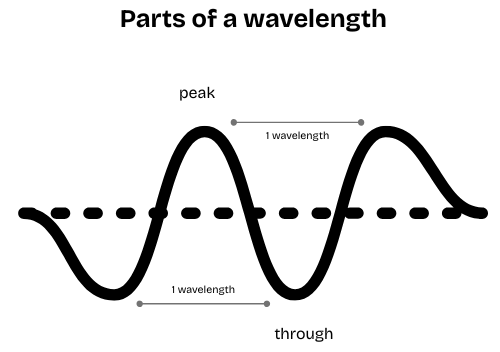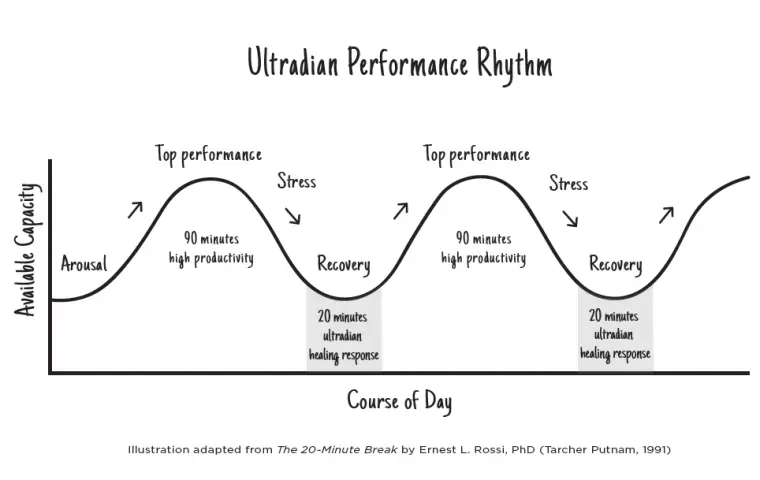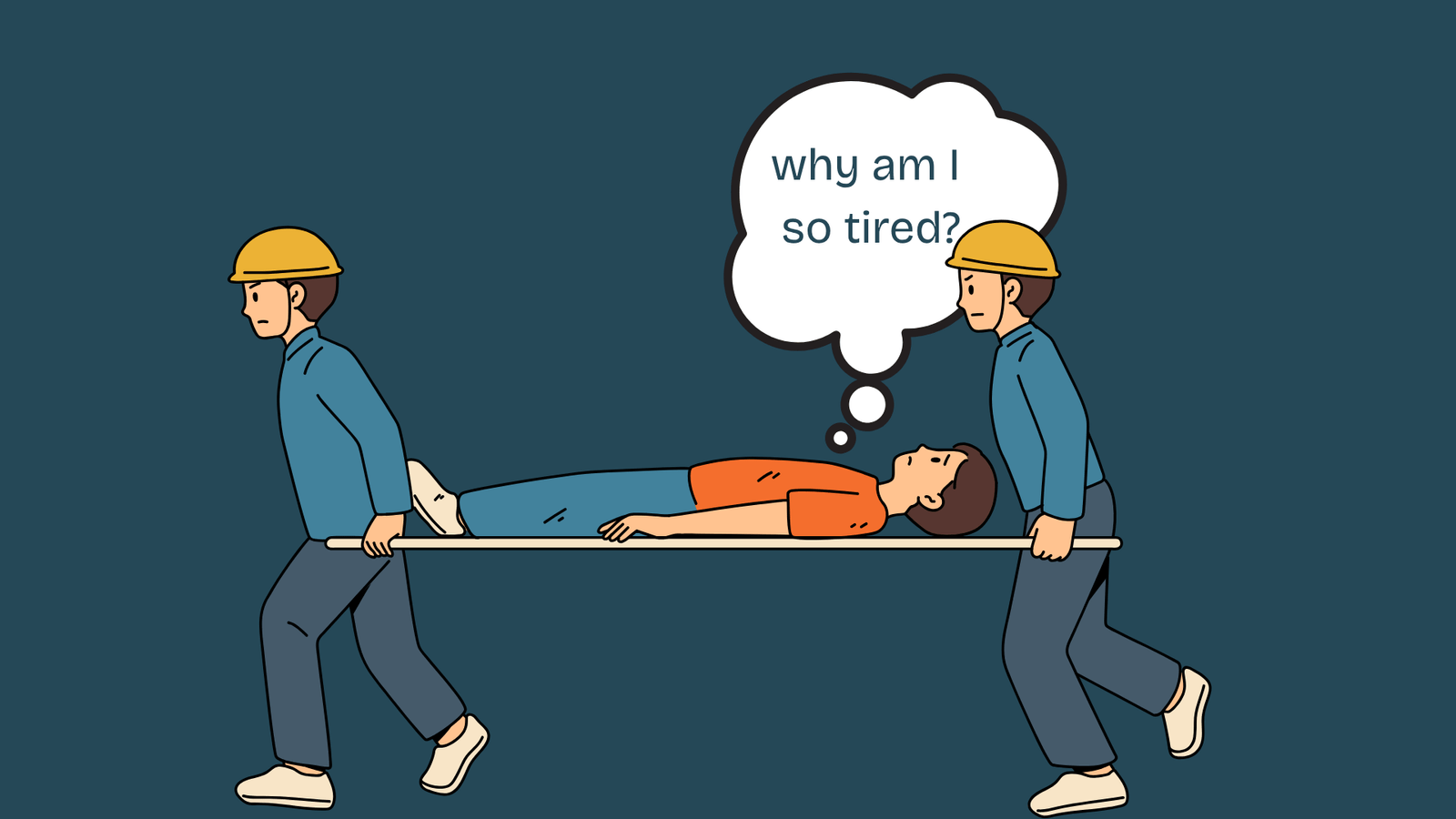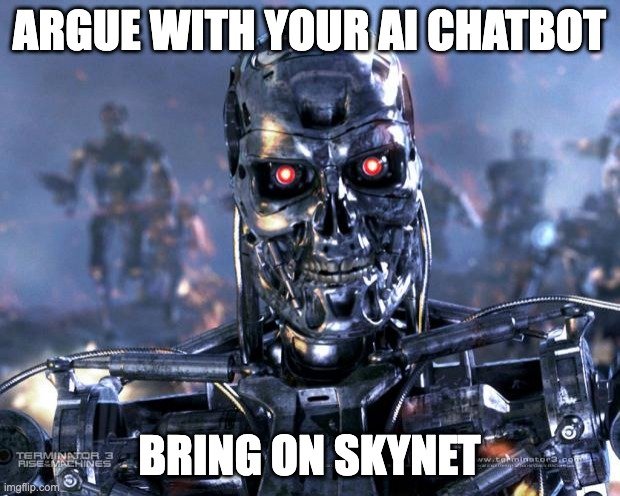Everywhere and Anywhere is a Wave.
Waves are everywhere. They’re primordial things in our universe. Radio waves. All the sounds we hear are waves. All types of electromagnetic waves. Then, we have ocean waves. Our dog Bailey, her fur has waves. When she pees, it makes small ripples in the veranda especially when she fails to use the pee tray. To the ants, her pee probably looks like dirty tsunamis.

Events in our lives come in waves. Weekdays we’re up and about. Weekends we rest.
Yet why aren’t we honoring our own biological waves? No rest for the wicked, they say. If so, wickedness are contact centers.
But Wait. What’s a Wave? Hello?
Let’s first define a few things.
A wave is a repeating movement that transfers energy from one place to another.
A wavelength is the distance from one wave to the next.

I would also argue that Goku’s Kamehameha isn’t really a wave in the pure physical sense. It’s an energy beam. Then again, that’s anime. All things can happen in anime.
The Revenge of the Body Snatchers Clocks.
Now our body clock comes in waves of waking and sleeping. And even smaller cycles of productivity and relaxation. We have two main types of biological rhythms. The circadian cycle and the ultradian cycles.
Circadian rhythm is like your master body clock. It’s concerned with the 24-hour cycle of your body. Ultradian cycles are smaller in length. They’re little wavelengths making up of 110 to 120 minutes a cycle.
I’ve borrowed an image from Pilar Gerasimo’s book The Healthy Deviant.1 For those of us who like Pomodoro timers, this illustrates the ebbs and flows of a typical work day.

That one of the reasons, we become productive is not by working long hours but by incorporating rest and recovery in between focused work.
The W in WFM Doesn’t Stand for Well-Being.
BPOs are quite notorious for having the unhealthiest of workers.2 It’s because we haven’t truly honored the natural tendency of the body to relax and rest. We tend to think of rest as an after-office thing we do. But WFM (workforce management) leaders don’t account for ultradian rhythms in how we schedule shifts, breaks and allocate for training. Schedulers tend to assume that we’re always at peak performance.
I wish the W in WFM stood for “wave” or “wellbeing”. WaveForce Management has a good ring to it, yeah? Whacka mole is really what’s happening these days. (Sorry, i’m in the midst of backlogs.)

This means solve rates per hour goals remain the same per agent all throughout the shift. Even if we distribute customer contact arrival patterns, we don’t seem to afford the same “energy” pattern for agents. We only calculate staffing per hour needed against that arrival.
Prolonged bouts of intense productivity take a toll on us. There’s also an emotional labor that goes with customer service where you have to act positive when dealing with complaints.
No amount of self-motivation and discipline takes burnout away.
Contact centers also give away so many vanity rewards: nap rooms, well-stocked pantries, wellness programs and even engagement initiatives that make you feel good. Their effectiveness, in truth, are short-lived. They don’t compound.
On the other hand, WFM scheduling models, which are at the heart of productive burnout, remain unchanged. And in the Philippines, BPO leaders don’t question it as much, much less know why and how these models are ripe for change.
Erlang C versus Common Sense: No Winners.
Erlang C calculators are the backbone of contact center workforce management. It determines how many to staff and where to schedule agents efficiently. All that to ensure we reply to customers within a specified threshold. The goal is to also minimize something we call “shrinkage” or non-productive time. Billable utilization fuels this. If you’re not productive within the shift, that work can’t be invoiced to clients (if that’s the type of contract your account uses.)
The problem with Erlang C as a model is that it assumes that all productive time is constant per hour. It accounts for occupancy or utilization of agents only because its goal is efficiency, not wellness. It also ducks the notion of patience. In the Erlang C formula, it doesn’t consider customer abandonments. It assumes that people will stay on the line.
I won’t bore you with the Erlang C calculation. Only know that it’s been with us for over 105 years. It remains unchanged and has yet to be dislodged as a standard.
| FACTOR | ERLANG C (MODEL) | ULTRADIAN CYCLE (BIOLOGY) |
|---|---|---|
| Goal | Forecasts workload with optimal staffing | Maintain cognitive energy and acuity |
| Breaks | Considered as cost in a per hour or activity billing | Considered investment in recovery |
| Focus Span | Implied as “infinite focus” until next scheduled break | Works in 90 minute cycles and requires a 20-30 minute break in between |
| Customer Impact | Faster customer response times and AHT. Prolonged occupancy and concurrency leads to rework and errors | Intentional responses that reduces ticket reopens. Better CSAT when done well. |
| Employee Impact | High occupancy of more than 80% leads to burnout, if not prolonged mental stress. | Ensures space for learning and allows “mini-resets” to recover energy. Healthier employees are more engaged. |
| Overall | Efficient but not sustainable | Effective but not necessarily efficient |
We still live in a post-industrial age where knowledge work is still both done by humans and assisted by machines (and now AI). Erlang C (or even the earlier Erlangs) promotes the interest of the business model, not a biological one. And we keep failing Maslow again and again.
My Top 3 Solutions. Yes, I Have Hope.
We need to have better strategies that blend both human effectiveness and WFM efficiency. To do this, I suggest 3 simple things to start.

Better Break Rule Patterns
- Don’t just schedule lunch and two 15-minute breaks
- Implement a rising tickets per hour towards peak and a descending tickets per hour towards break.
- Match ultradian rhythms and better schedule blocks for individual agents and not just wholesale team schedules
- Plan around shrinkage in mind. Don’t reduce it. Optimize.

Invest in Humans More
- Don’t use AI as a customer ticket deflection strategy (this is AI slop anyway).
- Enable AI to help BPO agents when productivity is expected to wane. Or when there is not enough staffing.
- Better yet, hire more. The cost of building an LLM is still higher than hiring a trained human agent.
- Economies are made better with human workforce than a jobless one.

Have HR own the WFM Function
- The problem with all of this is HR isn’t technical enough to compute WFM needs and tools, when WFM should really be an HR function, not an operations deliverable.
- Let an automated app do payroll and administrative work
- WFM should be treated within the realm of benefits and organizational development.
- Train for well-rounded HR leaders.
I’d concede that there are still so many things we have to do to balance human care with productivity. And that moving away from a problematic Erlang C requires a whole new paradigm in productive planning. In the absence of a standard, we need to be courageous to create one ourselves. If we truly care about employee well-being and welfare, we’d put this into action now.
Also customers need to exert a little patience. As humans, it just always pays to be kinder. If we get to be replaced by AI one day, it will be utterly humorous to see people shouting at an AI agent. If we do that, we’re guaranteeing T-800. Ah. Wasted energies all around.

Footnotes
- Pilar Gerasimo’s website: https://healthydeviant.com ↩︎
- Candelario CMC, Fullante MKA, Pan WKM, Gregorio ER Jr. Integrative Review of Workplace Health Promotion in the Business Process Outsourcing Industry: Focus on the Philippines. Public Health Pract (Oxf). 2024 Feb 19;7:100476. doi: 10.1016/j.puhip.2024.100476. PMID: 38463217; PMCID: PMC10920955. https://pmc.ncbi.nlm.nih.gov/articles/PMC10920955/ ↩︎
Leave a Reply